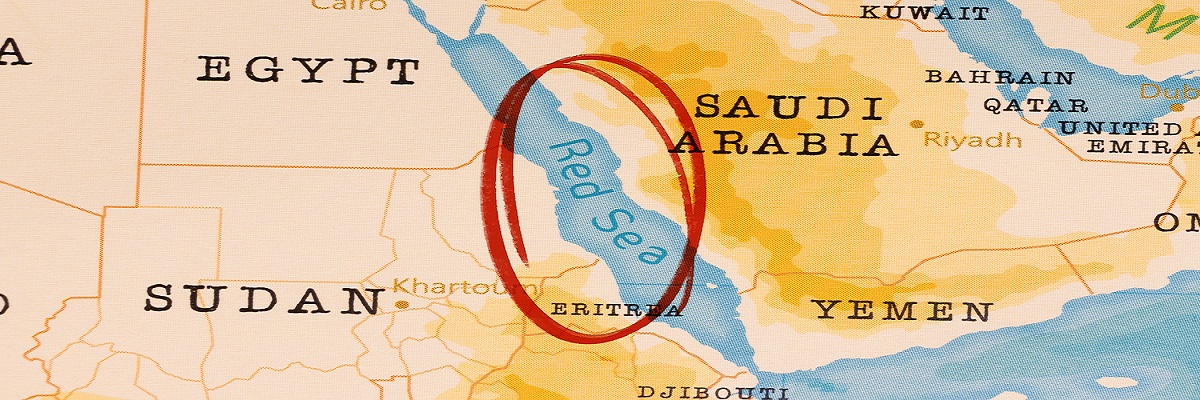Defense & Security
The Red Sea crisis is a new blow to global supply chains.

Image Source : Shutterstock
Subscribe to our weekly newsletters for free
If you want to subscribe to World & New World Newsletter, please enter
your e-mail
Defense & Security

Image Source : Shutterstock
First Published in: Feb.08,2024
Feb.23, 2024
In March 2021, the container ship Ever Given ran aground in the Suez Canal. The six days the canal remained closed raised a wave of concern worldwide as it blocked passage through this strategic route, which handles 30% of the world's container traffic. The incident caused serious delays in global supply chains, with its effects still being felt months after the crisis. The concern over the Ever Given case now pales in comparison to that provoked by attacks from the Houthi rebels, a Yemeni insurgent group, in the vicinity of the Bab el-Mandeb Strait, at the entrance of the Red Sea, on the route from European markets through the Suez Canal. In early November 2023, this rebel group began bombarding Israeli and American targets in support of the Palestinian group Hamas. Their attacks, which have extended to commercial traffic venturing through the area, aim to provoke a collapse that forces Israel to halt its offensive in Gaza.
The impact of this situation on the global economy is not easily quantifiable, but initially, it has led to higher insurance costs for those who continue to use this route. Also, there are additional costs for shipping companies that, to avoid the area, have decided to divert traffic towards the route around the Cape of Good Hope. At 9,000 kilometers and 14 days longer, this route is currently safer than the Suez Canal. Furthermore, it can be expected that sustained tension in this area will eventually lead to an increase in energy prices. Approximately 12% of the world's traded oil passes through the Suez, first passing through the Bab el-Mandeb Strait. All of this adds to the extra costs generated by delays resulting from circumnavigating Africa and the possibility of imbalances between supply and demand for inputs. All these factors create a scenario that, if sustained, will likely translate into an increase in consumer prices and a resurgence of inflation. This situation directly affects Europe, but also countries like China or India, not to mention the very negative effect it has on the economy of Egypt, the country that controls the Suez Canal.
This is not the only maritime passage facing difficulties. In Panama, the decrease in the depth of the canal, as a result of a prolonged drought, prevents the passage of heavier vessels, which must seek alternatives, often more expensive. Furthermore, it cannot be ruled out that, due to their location in areas of great geostrategic importance, the Strait of Hormuz (Persian Gulf) or the Strait of Malacca (Southeast Asia) may also become sources of instability, crucial points for international maritime transport. If instability persists, the search for alternative routes becomes an evident necessity. In fact, it is already underway. Besides the one around Africa, other routes to connect Asia and Europe could be explored: the Arctic route, limited by environmental and geopolitical reasons, could contribute, albeit probably modestly, to alleviating the situation. Others that combine land and sea segments could also do so. However, this latter option is complicated by the topography and the difficulty of finding routes that bypass conflict-ridden areas or do not give China the key to access them.
Given the difficulties global supply chains have faced in less than five years (the COVID-19 lockdowns, the war in Ukraine, and now the attacks at the entrance of the Red Sea), it is pertinent to consider how to mitigate their vulnerability, whether it is advisable to redesign them, and even if free and globalized trade remains viable as it is known today. Issues such as redundancy in supply chains and diversification of suppliers and markets allow for the creation of resilient systems that ensure the flow of resources. Reconsidering the balance between just-in-time logistics and accumulation logistics to achieve greater autonomy would help cushion the effects of an interruption like the one currently experienced in the Red Sea. The other question is how to create an environment that restores freedom of navigation through the Suez Canal. The United States launched the "Guardian of Prosperity" operation, which has not been supported by all countries trading through the canal and has also raised suspicions among those who see it as an undesirable alignment with Israel or as a safe path to the regional extension of the war in Gaza. Finding a solution that does not involve increased costs at all levels of global supply chains will be difficult. Rather, the goal is to calculate whether this increase compensates for what could be lost if the current situation, increasingly subject to the instability of the international system, is maintained.
First published in :

Professor of Conflict Analysis and International Security, University of Navarra, Spain
Unlock articles by signing up or logging in.
Become a member for unrestricted reading!